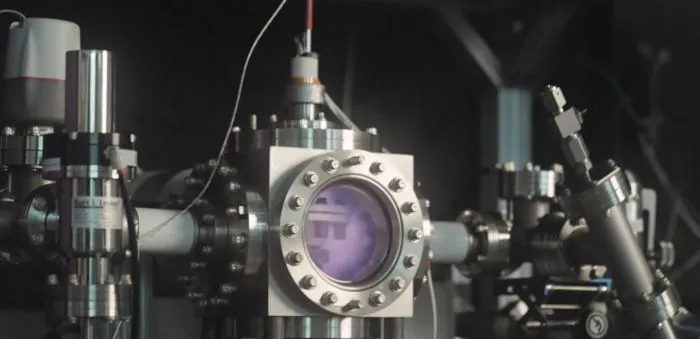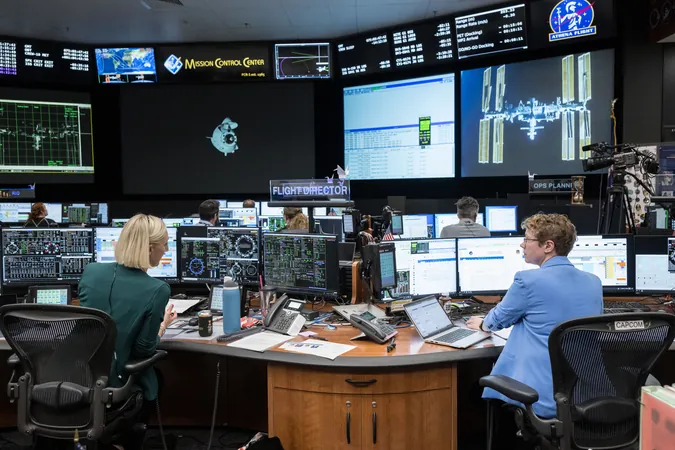
Breakthrough at UBC: Tiny Reactor Supercharges Nuclear Fusion!
2025-08-22
Author: Sophie
For decades, scientists have dreamed of harnessing the power of nuclear fusion—the very process that fuels our Sun—as the ultimate clean energy solution.
Traditionally, this pursuit required massive reactors and billion-dollar installations. But a groundbreaking new study from the University of British Columbia (UBC) may have reshaped the game.
Enter the Thunderbird Reactor: a compact, bench-top device that showcases how nuclear fusion can be achieved without colossal infrastructure.
The Innovative Thunderbird Reactor
At the core of this research lies the Thunderbird Reactor, a custom-built small-scale particle accelerator. This innovative setup combines a plasma thruster, a vacuum chamber, and an electrochemical cell, creating a novel way to introduce fuel into a metal target.
This accessible technology significantly lowers the barriers to fusion research, opening doors to advancements outside of elite national laboratory settings.
Revolutionizing Fusion Fuels
Focusing on deuterium, a heavy hydrogen isotope, the UBC team experimented with how to effectively load this fuel into palladium metal targets.
Employing a unique electrochemical method in tandem with a plasma field allowed them to pack in much more deuterium. This innovative technique compressed the fuel into the metal target with startling efficiency—applying just one volt of electricity created conditions equivalent to pressures 800 times that of the atmosphere!
Exciting Results: A Step Forward!
The results were promising: they achieved a 15% boost in nuclear fusion reaction rates with their combined method. While the system didn't produce more energy than it consumed, this study marks a significant milestone as the first time these techniques have effectively worked together to enhance deuterium fusion.
Notably, the team recorded hard nuclear signatures, like neutron emissions, which serve as direct indicators of fusion events.
A Legacy of Fusion Research
The journey toward deuterium fusion goes back to 1934, following early particle accelerators, and saw waves of excitement—and skepticism—throughout history. Unlike questionable claims of cold fusion from the late 80s, UBC's study is grounded in quantifiable nuclear signatures instead of elusive excess heat.
A Future Full of Potential
Although not yet a direct energy source, UBC's findings signal a promising future. By blending nuclear fusion science with electrochemistry and materials research, the Thunderbird Reactor stands as a platform for affordable and replicable studies.
The UBC team anticipates that this will inspire a new wave of researchers to experiment and innovate, nudging us one step closer to the dream of fusion power.
As the race for clean energy heats up worldwide, even incremental advancements in nuclear fusion represent crucial strides towards unlocking one of science’s most elusive treasures!









 Brasil (PT)
Brasil (PT)
 Canada (EN)
Canada (EN)
 Chile (ES)
Chile (ES)
 Česko (CS)
Česko (CS)
 대한민국 (KO)
대한민국 (KO)
 España (ES)
España (ES)
 France (FR)
France (FR)
 Hong Kong (EN)
Hong Kong (EN)
 Italia (IT)
Italia (IT)
 日本 (JA)
日本 (JA)
 Magyarország (HU)
Magyarország (HU)
 Norge (NO)
Norge (NO)
 Polska (PL)
Polska (PL)
 Schweiz (DE)
Schweiz (DE)
 Singapore (EN)
Singapore (EN)
 Sverige (SV)
Sverige (SV)
 Suomi (FI)
Suomi (FI)
 Türkiye (TR)
Türkiye (TR)
 الإمارات العربية المتحدة (AR)
الإمارات العربية المتحدة (AR)